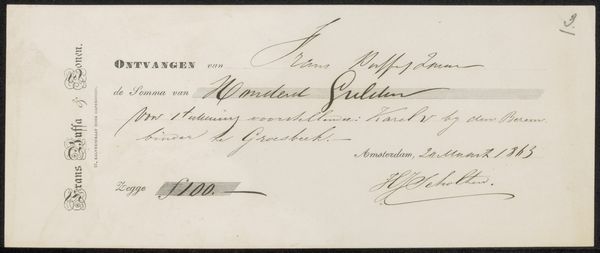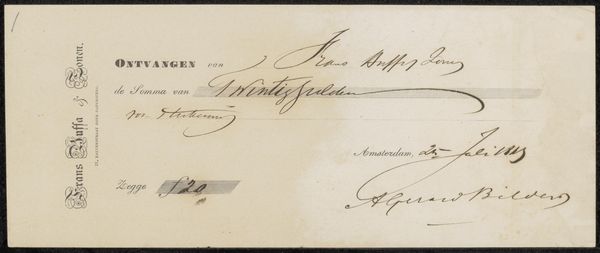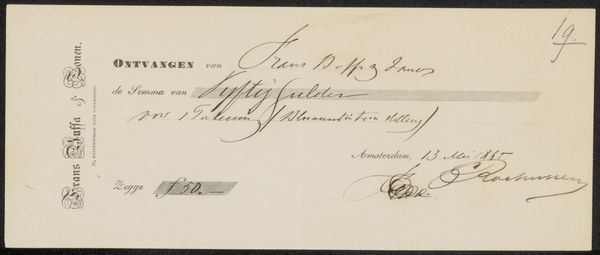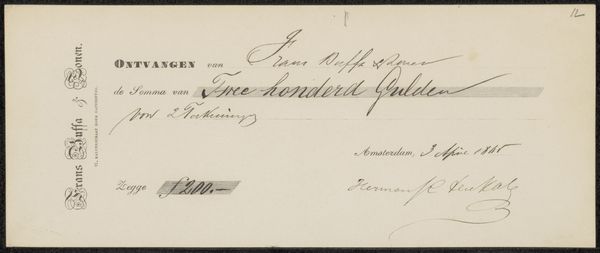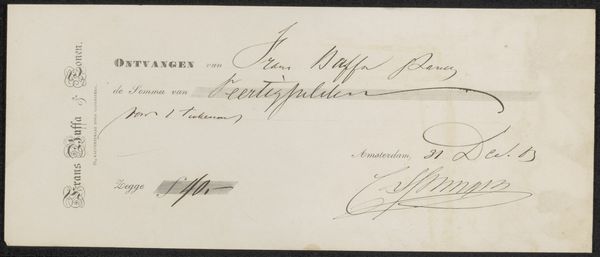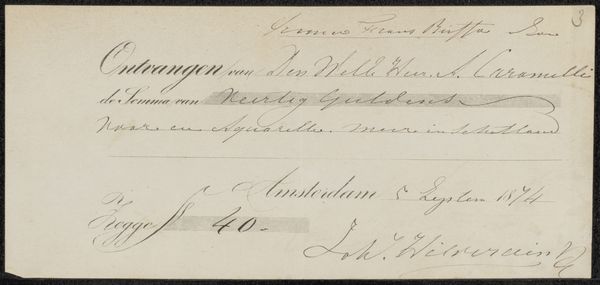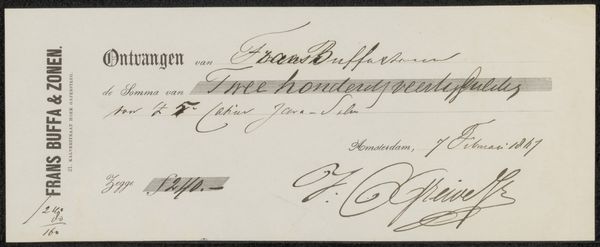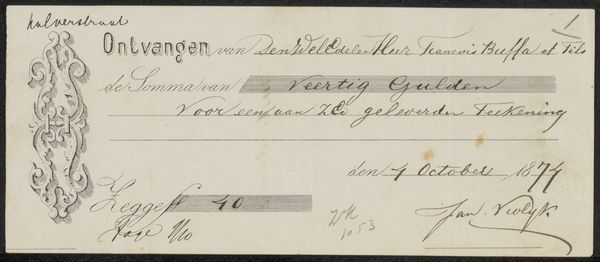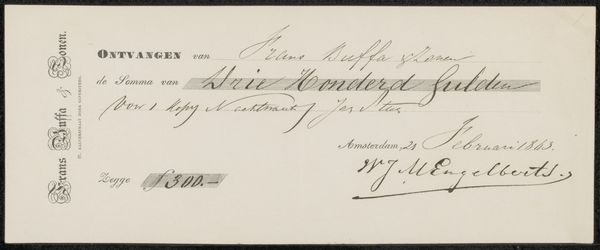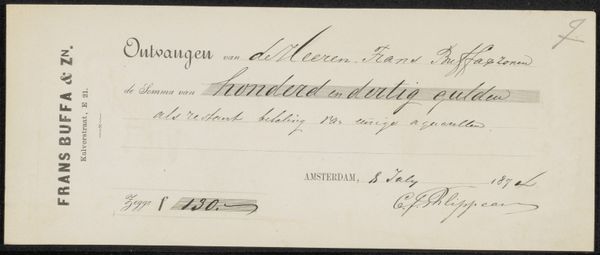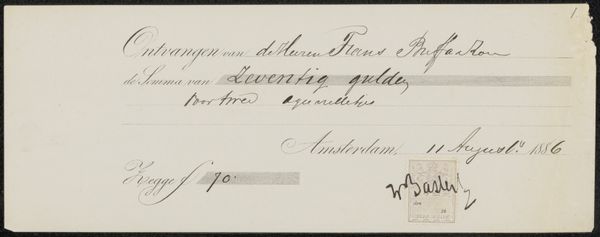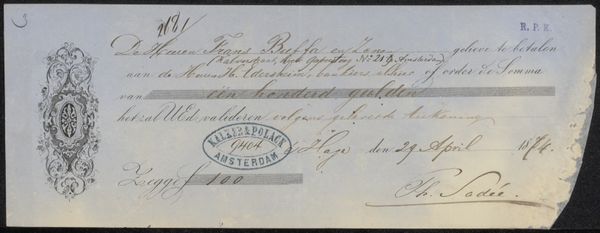
drawing, ink, pen
#
drawing
#
pen sketch
#
ink
#
pen
Copyright: Rijks Museum: Open Domain
Curator: This unassuming pen and ink drawing is actually a receipt, titled "Kwitantie voor Johan Conrad Greive." The Rijksmuseum believes it was created sometime between 1863 and 1867, documenting a payment made by the prominent art dealers Frans Buffa en Zonen. Editor: It looks like something from a different era. The cursive script is so elegant and detailed, particularly the flourish of the signatures at the bottom; but to me, it feels impersonal. Functional, almost like bureaucratic ephemera. Curator: Exactly! It gives us a rare glimpse into the day-to-day workings of the art world back then. Consider the socio-economic context; here's material evidence connecting a well-known artist—Greive—to one of the leading art dealerships. Editor: It does make me wonder, though, about the power dynamics at play. Who decided the "worth" of this "lettering," as it's described on the receipt? And how did those financial interactions affect artistic production itself? Were artists pressured to conform to popular taste to secure income? Curator: These receipts serve not just as records of financial transactions, but as historical artifacts. The receipt illustrates a certain formal structure, but it's a form made entirely through personal connections and artistic integrity. Editor: You’re right, that financial information is telling: the mention of "Leventig Gulden." The precise sum points towards a calculated exchange. And the deliberate style suggests the dealers, Buffa en Zonen, were very keen to present a professional face. Curator: Consider the art market's increasing commodification in the 19th century, such as in France and England at the time. You see how artists became increasingly reliant on dealers and exhibitions to survive. I agree with the points you made about pressures. This object serves as hard evidence of the commercial apparatus, and that helps to shape our impression of nineteenth-century art overall. Editor: When looking back, such things always strike me as so mundane. Yet, seeing it now, it makes you think how something like this has so much contextual value. It’s the financial paperwork—the receipts, invoices—that can unlock another understanding of social connections within an art scene. Curator: Absolutely. Each carefully written word and flourished signature offer us silent clues about their economic ties. It emphasizes the business-like nature of the trade; there’s something inherently human within. Editor: Indeed. What was at one point transactional has today become so deeply informative, telling us not just about art, but human engagement with creative labour.
Comments
No comments
Be the first to comment and join the conversation on the ultimate creative platform.
